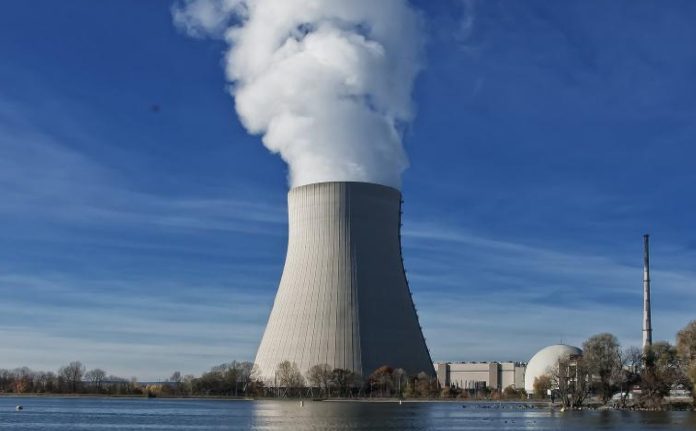Environmental NGOs took another step in their battle against the European Commission on April 18th, 2023 by filing two lawsuits with the European Court of Justice in Luxembourg. The lawsuits are trying to block the EC’s inclusion of gas and nuclear as transitional energies in its recently created taxonomy for sustainable activities that qualify for subsidies.
The NGOs argue that calling gas and nuclear sustainable is “…as absurd as it is unlawful” and that their inclusion will divert investments away from renewable energies. But if one carefully reads the text, the EC’s decision was neither absurd nor unlawful and is actually vital for progress to be possible.
Indeed, the taxonomy establishes very strict requirements for “green” investments in projects using gas or nuclear and has explicitly labelled them as “transition fuels” needed in the foreseeable future to meet energy demands and to successfully decarbonize Europe. Renewable energies are currently not sufficient to keep the power grids on and the European Commission recognizes that gas and nuclear are necessary for a successful green energy transition.
Including gas and nuclear
Launched in 2020, the initial Taxonomy Regulation did not include gas and nuclear in its list of “environmentally sustainable economic activities”. A Complementary Delegated Act (CDA) was released by the EC on February 2nd, 2022 that included gas and nuclear in the taxonomy as transition fuels.
The CDA was challenged by two committees of the European Parliament, but ultimately held up by a majority vote on July 6th. EU Financial Services Commissioner Mairead McGuinness said, “The Complementary Delegated Act is a pragmatic proposal to ensure that private investments in gas and nuclear, needed for our energy transition, meet strict criteria. Investment in renewables is already prioritised in our Taxonomy — this is our future.”
French MEP Gilles Boyer defended his position by saying that renewable energies “would be ideal, but it’s not possible right now” and that “No one says that gas and nuclear power are green energies, but they are temporarily essential to the transition.” Pascal Canfin, Chair of Parliament’s Environment Committee, argues that “Our main and most urgent priority is to phase out coal, as soon as possible in Europe. To do so, gas can have a role as an ‘activity useful for the transition’ when replacing coal – and only when replacing coal — because we want to pursue decarbonization.”
The debate around nuclear is a little different because while this energy does not emit any CO2, the central issue regards disposing radioactive waste for which various possibilities exist, but they require time and money. Until then, gas infrastructure is easier to build, is already widely in place and could be repurposed for renewable energies once the technology is ready. This is why EU leaders realize that gas is needed as a transition energy to a greener infrastructure.
At a meeting of EU leaders in March 2022, EC president Ursula von der Leyen said the EU needed more LNG sources to secure its energy security and that “Whatever we do with the LNG gas, the pipelines can one day be used as infrastructure for hydrogen so it’s a perfect transition.”
“When the wind isn’t blowing”
The EU’s immediate priority is moving away from coal. The IEA’s World Energy Outlook special report says that taking into account both CO2 and methane emissions, switching from coal to gas reduces emissions by 50% for producing electricity. This switch reduced global CO2 emissions by 500 million tonnes between 2010 and 2019.
In response to Russia’s invasion of Ukraine, the EC released its REPowerEU plan in May 2022. The plan estimates that to reduce dependence on Russian fossil fuels by 2027, “renewable energy in electricity would need to climb to 69% by 2030, to 32% in transport, and in heating/cooling should expand at least 2.3 percentage points annually.” But in a December 2022 report, the IEA shows that the EU is currently not on target to meet those goals.
They contend that “While the share of renewables in electricity expands to almost 55% by 2027 in our main case, this is well below the 69% share the European Commission estimates is needed to support the REPowerEU plan” and that “In 2020, heating and cooling accounted for over half of the European Union’s total final energy consumption, with renewables representing only 23% of it.”
Austria learned the hard way that renewables are not yet sufficient. The country’s last coal-fired station was shut down in 2020 and converted into a research center to experiment with green hydrogen. But in June 2022, authorities ordered the station to bring back coal-fired operations, thus “reviving use of the dirtiest fossil fuel to generate power as Russia curbs flows of natural gas to Europe.”
A report from the UNECE argues that gas is needed to address climate change and that “there is a strong medium-to-long-term future for natural gas” because it “…is also a potential complement to renewable energy in that it can provide cover for the intermittency of power generated by renewables – in other words when the wind isn’t blowing or the sun isn’t shining.” This is why the CDA included gas as a transition fuel. Current renewable energy technology cannot meet all of Europe’s energy needs.
Searching for new gas supplies
To meet energy needs and prioritize decarbonization, EU leaders have been hunting worldwide for new suppliers and contracts for liquefied natural gas (LNG). And for those offering ‘cleaner’ LNG and production processes, even better.
Canadian gas reserves have gotten increased attention from overseas just as the country has imposed very strict regulations on LNG production. This has slowed Canada’s ability to export LNG. Ursula von der Leyen noted that “We don’t have the necessary infrastructure to link Canada to the EU,” but that the EU would be interested in buying hydrogen from Canada in the future. As a result, the EU looked south and following the Russian invasion, LNG exports from the U.S. to Europe increased by more than 137% in 2022.
A New York Times article observed that, “European leaders have been converging on Africa’s capital cities, eager to find alternatives to Russian natural gas.” Mozambique, with 2.8 trillion cubic metres (tcm) of natural gas reserves (the third largest in Africa), has attracted a lot of attention even though the country only recently exported its first LNG shipment to Europe. Plus, Mozambique’s gas has a “negligible carbon dioxide content” which means production should be less carbon intensive than other projects. In August 2021, Max Tonela, Mozambique’s Minister of Mineral Resources and Energy, announced:
“Although we have a gas that already has a small emission content, we are prioritising the use of pre-existing decarbonisation technologies… We are going to see an increase in gas consumption, as it is the least polluting among fossil fuels, and we are also going to see an accelerated increase in renewable energies, which are still an intermittent energy source.”
EU leaders are also courting Qatar. With approximately 891 tcf (or 25 tcm) of natural gas reserves, it ranks third behind Russia and Iran. In November 2022, Germany signed two contracts with QatarEnergy and ConocoPhillips that will ensure the delivery of 2 million tonnes of LNG to Germany starting in 2026. Chancellor Olaf Scholz heralded the news and said, “They are long-term agreements; that is also the good message for Germany’s energy security.”
Pragmatism, not idealism, averts crises
The EC’s inclusion of gas and nuclear in its sustainable activities’ taxonomy recognizes that the idealistic goal of ‘all renewables, right away’ is not realistic given the current state of technology. Plans such as the REPowerEU assumed that sufficient alternatives to gas and nuclear would be in place by now. Since that is not the case, gas is currently the best transition energy available to help Europe fully decarbonize and reduce CO2 emissions immediately.


































